
The New Urban Crisis: How Our Cities Are Increasing Inequality, Deepening Segregation, and Failing the Middle Class?and What We Can Do About It
by
Richard Florida
Published 9 May 2016
There’s no doubt that the New Urban Luddism of today’s cities is a big contributor to the New Urban Crisis. Yet this does not mean that the solution is to simply rid our cities of all land use regulation. Certainly, there is much that can and should be done to limit NIMBYism and to streamline outdated land use restrictions. But the basic notion, advocated by the growing chorus of so-called market urbanists, that we can make our cities more affordable, more equal, and more productive simply by getting rid of existing land use restrictions is one of those ideas that is simply too good to be true. On the one hand, the high cost of land in superstar neighborhoods makes it very hard, if not impossible, for the private market to create affordable housing in their vicinity.
…
MAKE CLUSTERING WORK FOR US AND NOT AGAINST US The clustering force is the key driver of economic growth, and it is absolutely critical that we effectively harness it to create the broadest possible economic and social benefits. As we have seen, the crux of the problem here revolves around the urban land nexus: land is scarce precisely where it is needed the most. We can’t make more land, but we can develop the land we have more intensively and efficiently. A growing chorus of so-called market urbanists argues that the best way to do this is by eliminating the restrictive zoning and building codes that limit the market’s ability to build as needed. They make an important point: zoning and building codes do need to be liberalized and modernized. We can no longer allow NIMBYs and New Urban Luddites to stand in the way of the dense, clustered development our cities and our economy need.
…
as Patchwork Metropolis, 146, 147 (fig.) ranking of, 16 (table), 17 real estate prices in, 22 renters in, 200 Lucas, Robert, 21 Luddites, 26–27 Lycos, xiii–xiv Manhattan, 43, 129 land values in, 23 SoHo, xvi, 2, 19–20, 20 (fig.), 36, 61–62 West Chelsea, 37 manufacturing, decrease in, 202–204 market urbanists, 192 Marshall, Alfred, 21 Marx, Karl, 26, 121 Massey, Douglas, 58 mayors, 213–214 McKenzie, Roderick D., 126 Medellín, Colombia, 167, 182–183 median housing costs, 221 medical centers, of universities and colleges, 66 medicine, urbanism and, 184 mega-regions, 197–198 mega-slums, 172–174 Mellander, Charlotta, 99 Memphis, TN, 187 (fig.), 188 Mesa, AZ, 153–154 Mexico City, 41 Miami, 41, 154 in New Urban Crisis Index, 187 (fig.), 188 as Patchwork Metropolis, 146–148, 148 (fig.)

Golden Gates: Fighting for Housing in America
by
Conor Dougherty
Published 18 Feb 2020
A year later she hosted a leftist roundtable at the second YIMBYtown in Oakland. Where YIMBY Action stood on Prop 10 meant a lot to her, and now there were a lot more Victorias: YIMBY Action had a whole sub‐group called YIMBY Socialists made of people who were focused on affordable and public housing. They were the YIMBY opposite of another sub‐group called YIMBY Market Urbanists, whose members were rooted in the free‐market thinking espoused by economists like Ed Glaeser. And no issue split them, or the club, more than rent control. When YIMBY Action members gathered at the office to discuss the 2018 endorsements, the pressure of how the Prop 10 vote would turn out, and what that vote would say about the direction of the club, hung heavy over the meeting.
…
The total tab would run about $100 million (landlords accounted for about 80 percent of that), and there were many hours of talk radio and many pages of newspaper copy dedicated to hashing out the sober pros and cons. But here they would go through them again by having two people, one from YIMBY Socialists and another from YIMBY Market Urbanists, present the yes and no cases. The logic behind rent control rests on what seems like a simple idea: If prices are going up too fast then the best way to solve that problem is to pass a law that forces businesses to stop raising them. Behind this thinking is an implied belief that high prices mostly just exploit people who can’t pay them.
…
“We’re talking about the rights of long-term tenants to have stability in their homes and remain in the community that they helped to create,” said a member of the YIMBY Socialists during a presentation on why they should endorse yes. “We give a voice to people who aren’t even here today, and this undermines our ability to protect those people,” said a member of the YIMBY Market Urbanists during a presentation on why they should endorse no. “I am for expanding rent control, especially statewide, especially to some places that don’t have it, like for single-family homes that are owned by large landlords,” Laura said during her presentation on why they should vote not to endorse one way or the other.
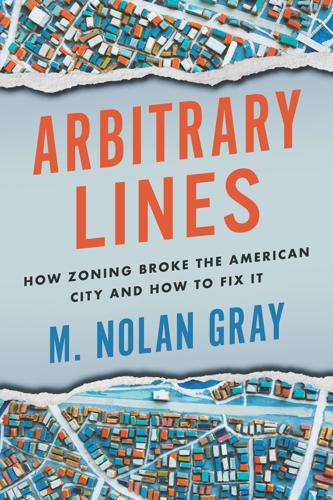
Arbitrary Lines: How Zoning Broke the American City and How to Fix It
by
M. Nolan Gray
Published 20 Jun 2022
This book does not aspire to be a literature review, but the curious can begin with “The Economic Implications of Housing,” a survey of the literature by two pioneers in this space, Edward Glaeser and Joseph Gyourko. 2. The YIMBY moment is unique in that it’s perhaps the first social movement to find its roots in the blogosphere. Adam Hengels would coin the term market urbanism in 2008. Later joined by Stephen Smith and Emily Hamilton, Market Urbanism would quickly establish itself as a major proto-YIMBY blog. In 2011, New York YIMBY began providing real estate news with a pro-development orientation. Matt Yglesias took the idea of easing up on zoning mainstream through outlets like Slate, and Kim Mai-Cutler would later pen the masterpiece of the YIMBY blogging genre, “How Burrowing Owls Lead to Vomiting Anarchists (Or SF’s Housing Politics Explained)” for TechCrunch in 2014, providing succor for the early Bay Area YIMBY movement. 3.
…
Nelson, Private Neighborhoods and the Transformation of Local Government (Washington, DC: Urban Land Institute, 2005). 7. In any other city, enforcement of the provisions of a deed restriction is left to parties to its provisions. 8. M. Nolan Gray, “Are Houston’s Deed Restrictions ‘Basically Zoning’?” Market Urbanism, April 11, 2018, https://marketurbanism.com/2018/04/11/houstons-deed-restrictions-basically-zoning. The following section reformulates ideas first advanced here, drawing heavily on Siegan, Land Use without Zoning, chapter 3. 9. The exact figure remains uncertain, but both Bernard Siegan, Land Use without Zoning, 2nd ed.
…
The exact figure remains uncertain, but both Bernard Siegan, Land Use without Zoning, 2nd ed. (Lanham, MD: Rowman and Littlefield, 2020), and Teddy M. Kapur, “Land Use Regulation in Houston Contradicts the City’s Free Market Reputation,” ELR News and Analysis (2004) posit roughly a quarter. 10. M. Nolan Gray, “The Case for Subsidizing Deed Restrictions,” Market Urbanism, May 9, 2018, https://marketurbanism.com/2018/05/09/case-subsidizing-deed-restrictions/. The following section draws heavily from this earlier blog post, which also draws heavily on Siegan, Land Use without Zoning. 11. Siegan, Land Use without Zoning. 12. We might put on some DJ Screw, for added effect. 13.
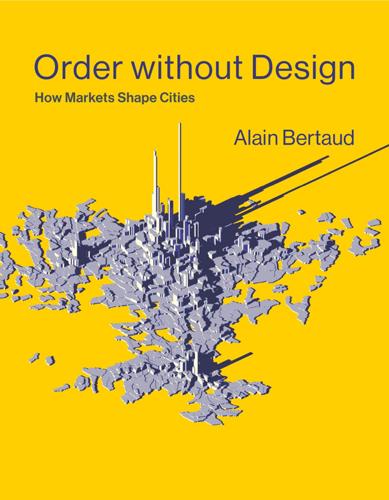
Order Without Design: How Markets Shape Cities
by
Alain Bertaud
Published 9 Nov 2018
Indeed, markets create an order generated without design, as argued by Frederich Hayek, an Austrian-British economist and philosopher who taught at the London School of Economics, the University of Chicago, and the University of Freiburg in the middle of the twentieth century. The order created by markets manifests itself in the shape of cities. Markets transmit through prices the information generating the spatial order. When prices are distorted, so is the order generated by markets. Urban planners—on behalf of politicians—aim to modify that order through design. These design interventions implemented by planners consist mostly of regulations and the building of infrastructure and public spaces. The objective of planning regulations is to modify the outcome of unconstrained markets to increase the welfare of citizens.
…
It varies from only slight modification in a city like Houston, Texas, to complete obliteration in a city like Brasília, Brazil, and in some cities of the former Soviet Union. We are facing a strangely paradoxical situation in the way cities are managed: the professionals in charge of modifying market outcomes through regulations (planners) know very little about markets, and the professionals who understand markets (urban economists) are seldom involved in the design of regulations aimed at restraining these markets. It is not surprising that the lack of interaction between the two professions causes serious dysfunction in the development of cities. It is the story of the blind and the paralytic going their own ways: The planners are blind; they act without seeing.
…
The government let the price of land determine both the building heights and FARs while providing the large infrastructure investment that was required for the price of land to reach its full potential, given the short distance between Pudong and the Bund. Government planners in the case of Pudong understood the mechanism of markets. They designed and built the infrastructure that would maximize the value of land across the river and support the densities created by markets. Urban Managers Should Understand How Markets and Design Interact to Allow Cities to Adjust to Change Confusion between Market and Design: The Planning of Densities Planners who advocate “smart growth” dream of a clever design arrangement that would achieve an optimum trade-off between land consumption and commuting distance.
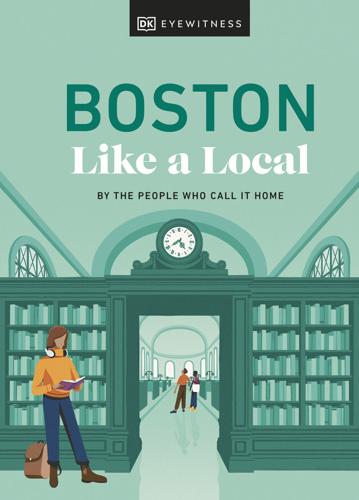
Boston Like a Local
by
Dk Eyewitness
Paul Dudley White Bike Path Paul Revere Park Rose Kennedy Greenway g Maps g Contents ← MAP 2 → EAT Anoush’ella B & G Oysters Blackbird Donuts Chilacates Flour FoMu Frenchie Kava Neo-Taverna Mike and Patty’s Mike’s City Diner Mistral O Ya Saltie Girl Stillwater Tatte DRINK The Delux Gracenote Greystone Jaho Coffee Offsuit Shojo SHOP Artefact Home Formaggio Kitchen Hudson Lekker Home Marie Galvin Millinery M. Flynn Michelle Mercaldo More Than Words Ore by Sophie Hughes Stitch and Tickle SoWa Vintage Market Urban Grape ARTS & CULTURE Boston Public Library Central Branch Don’t Let Me Be Misunderstood Edgar Allan Poe Statue Gibson House Museum NIGHTLIFE The Beehive Cathedral Station Club Café Jacques’ Cabaret The Kartal Lyric Stage Company Nick’s Comedy Stop Speakeasy Stage Company Trophy Room Urbanity Dance OUTDOORS Berkeley Community Garden g Maps g Contents ← MAP 3 → EAT Cutty’s Mida Select Oyster DRINK Bleacher Bar The Mission Bar & Grill Nathálie SHOP Frugal Bookstore Newbury Comics Nuggets Records Rick Walker’s ARTS & CULTURE Fenway Park Living Museum Isabella Stewart Gardner Museum The Mapparium MassArt Museum Museum of Fine Arts Sangre Indigena We Are All Streams Leading to the Same River NIGHTLIFE The Bebop Cafe 939 Darryl’s Corner Bar & Kitchen Front Porch Arts Collective Loretta’s Last Call Paradise Rock Club Wally’s Cafe Jazz Club OUTDOORS Charles River Esplanade Commonwealth Avenue Mall Head of the Charles Regatta Olmsted Park Red Sox at Fenway Park g Maps g Contents ← MAP 4 → EAT Alden & Harlow Bagelsaurus Celeste Field & Vine Life Alive Mamaleh’s Oleana Pammy’s Shirley Veggie Galaxy DRINK 1369 Coffeehouse Aeronaut Brewing Company Cicada Coffee Bar Charlie’s Kitchen Dear Annie Lamplighter Brewing Co.
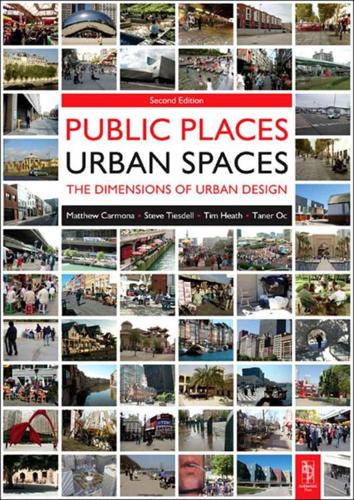
Public Places, Urban Spaces: The Dimensions of Urban Design
by
Matthew Carmona
,
Tim Heath
,
Steve Tiesdell
and
Taner Oc
Published 15 Feb 2010
Also drawn primarily from an American context, Kelbaugh (2008a, 2008b) identified three ‘self-conscious’ urbanisms – New Urbanism, Post Urbanism and Everyday Urbanism – which ‘… represent the cutting edge of theoretical and professional activity in Western architecture and urbanism.’ (2008a: 105 – see also Fishman 2005; Mehrotra 2005; Strickland 2005). These urbanisms are juxtaposed with what Kelbaugh (2008a: 105) refers to as ‘market urbanism’:‘… current conventions and modes of land acquisition, professional planning and design services, government regulation, financing, and construction for the thousands of real estate development projects that spring up in places and at times determined by macro and micro market forces and by decisions of private developers.’
…
Other self-conscious urbanisms, of course, exist, including:• Incremental organic (generative) urbanism, reflecting the slow growth of the traditional city. • Garden Cities, bringing together town and country in the ‘suburban idyll’. • Modernism, with its embrace of technology, the future and the potential of rational enquiry. • Sprawl, representative of a market urbanism. • Sustainable place-making, reflecting the conscious process of making better places for people, as advocated throughout this book. In the future, the quest for sustainable place-making may transcend all these urbanisms. The aim should be to engage with ideas while avoiding being distracted by ideology and ideologues.
…
E & F N Spon, London Jenks, M (1988) Housing problems and the dangers of certainty, in Teymur, N; Markus, T A; & Woolley, T (editors) Rehumanising Housing, Butterworth, London, 53–60 Jessop, B (1999) Reflections on globalisation and its (il)logics in Dicken, P; Olds, K; Kelly, P; & Yeung, H. (1999) Globalisation and the Asia-Pacifica: Contested Territories, Routledge, London, 19-37 Jiven, G & Larkham, P J (2003) Sense of place, authenticity and character: A commentary, Journal of Urban Design, 8(1), 67–82 JMP Consultants (1995) Travel to Food Superstores, JMP Consultants, London Johns, R (2001) Skateboard city’, Landscape Design, The Compact City, A Sustainable Urban Form? 303, 42–44 Johnston, B D (2008) Planning for child pedestrians: Issues of health, safety and social justice, Journal of Urban Design, 13(1), 141–146 Jones, C & Watson, C (1996) Urban regeneration and sustainable markets, Urban Studies, 33(7), 1129–1140 Jones, M (2003) Safe streets – Challenging the principles, Municipal Engineer, 156, 191–195 Jones, M (2001) Promoting cycling in the UK – Problems experienced by the practitioners, World Transport Policy & Practice, 7(2), 7–12 Jones, P; Boujenko N; & Marshall, S (2007) Link and Place: A Guide to Street Planning and Design, Landor Books, London Jones, T & Newburn, T (2002) The transformation of policing?
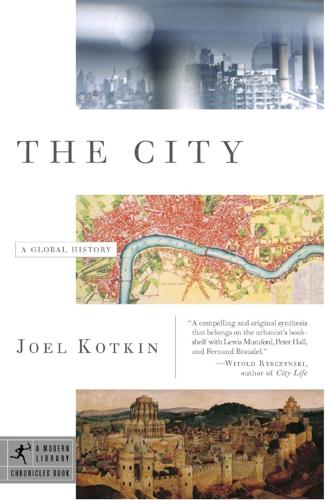
The City: A Global History
by
Joel Kotkin
Published 1 Jan 2005
EUROPE’S EXPANDING URBAN ORDER The new routes to Asia and the Americas constituted only part of a vastly expanding field of economic endeavor for cities. New European markets also were opening up in what had been the remotest hinterlands in Roman times. The urban imprint on the continent now expanded for the first time in a millennium. Villages were becoming towns and some towns cities, with their own cathedrals and central markets. Urban centers arose from the upper Rhineland to Riga, Gda nsk, and the steppes of Russia.1 For the first time since the classical period, Europe’s level of urbanization surpassed that of Asia and the Near East.2 Between 1500 and 1650, the number of towns of over 10,000 almost doubled to nearly two hundred; the overall percentage of urban dwellers grew from 7.4 to 10 percent.
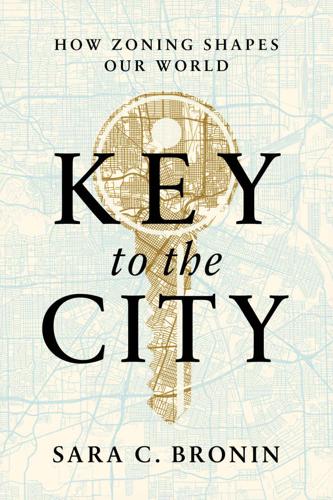
Key to the City: How Zoning Shapes Our World
by
Sara C. Bronin
Published 30 Sep 2024
Census Bureau Center for Economic Studies, 2022). 80 This segregation costs an estimated: Metropolitan Planning Council, “The Cost of Segregation,” 2017. 80 residential segregation in the 209 largest cities: Stephen Menendian, Samir Gambhir, and Arthur Gailes, “The Roots of Structural Racism Project: Twenty-First Century Racial Residential Segregation in the United States,” Othering and Belonging Institute at UC Berkeley, June 30, 2021. 80 rushed to record: University of Minneapolis, Mapping Prejudice Project, https://mappingprejudice.umn.edu. 81 highest Black-White homeownership gap: Jung Hyun Choi et al., “Explaining the Black-White Homeownership Gap: A Closer Look at Disparities Across Local Markets,” Urban Institute, 2019. 81 legislative mandate that requires the city: Minn. Stat. Ann. § 473.864. 82 the final plan: City of Minneapolis Department of Community Planning and Economic Development, Minneapolis 2040—The City’s Comprehensive Plan (2020). 82 eliminate single-family zoning: Minneapolis, MN, Code of Ordinances § 546.30 (hereinafter “Minneapolis Code”). 82 Minneapolis a wild outlier within the Twin Cities metro: Mary Jo Webster and Michael Corey, “How Twin Cities Housing Rules Keep the Metro Segregated,” Star Tribune, August 7, 2021. 82 YIMBY-style change requires three groups: Hearing on Housing Supply and Innovation Before the U.S.
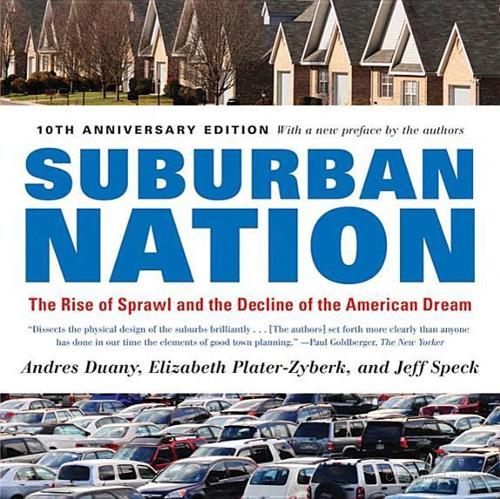
Suburban Nation
by
Andres Duany
,
Elizabeth Plater-Zyberk
and
Jeff Speck
Published 14 Sep 2010
THINKING OF THE CITY IN TERMS OF ITS SUBURBAN COMPETITION The fact that policy and planning can be blamed for our cities’ problems is actually encouraging—it implies that better policy and better planning can produce better cities. But that is not enough. To be effective today, urban leaders must stop thinking of their cities strictly from the inside out, only from the point of view of their own citizens. That approach may seem virtuous, but it ignores the reality of regional competition in an open market. Urban leaders must borrow a page from the suburban developers’ handbook and look at their communities from the outside in, through the eyes of a customer who is comparison-shopping. A family or company moving to a metropolitan area has a choice between the city and the suburb, both of which are competing for its business.
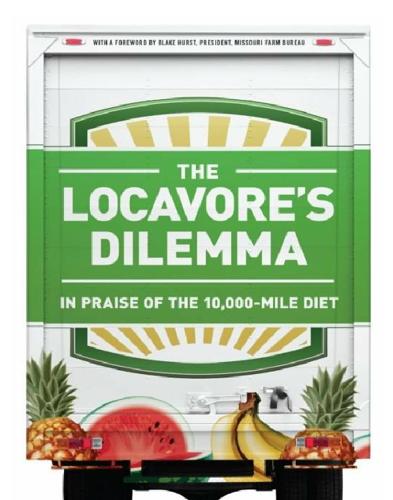
The Locavore's Dilemma
by
Pierre Desrochers
and
Hiroko Shimizu
Published 29 May 2012
See United Kingdom Unbalanced nature Undernourishment Unhealthy diets United Kingdom (U.K.) food commodities sold in London (table) See also specific places United States (U.S.) biotechnology and employed farmers foodborne illness in Irish potato famine and staple crops See also specific places Urban folks Urban food producers Urban labor markets Urban land Urban livestock Urban Potato Patches Urban sprawl Urbanization food imports and high-density See also City U.S. See United States Value agricultural production per worker feel good Varro Vegetarian diet Vertical farming Victory Gardens Vilsack, Tom Virgil Vitalism Vitamins Vogt, William Walden (Thoreau) Wartime gardening local food initiatives (photo) transportation reduction efforts See also World War I; World War II Waste.

$2.00 A Day: Living on Almost Nothing in America
by
Kathryn Edin
and
H. Luke Shaefer
Published 31 Aug 2015
.” [>] nearly 70 percent: Joint Center for Housing Studies of Harvard University, “The State of the Nation’s Housing 2013” (Cambridge, MA, 2013), http://www.jchs.harvard.edu/sites/jchs.harvard.edu/files/son2013.pdf. [>] less affordable as a result: Stephen Malpezzi and Richard K. Green, “What Has Happened to the Bottom of the US Housing Market?,” Urban Studies 33, no. 10 (1996): 1807–20; John M. Quigley and Steven Raphael, “Is Housing Unaffordable? Why Isn’t It More Affordable?,” Journal of Economic Perspectives 18, no. 1 (2004): 191–214. [>] fell 13 percent: Joint Center for Housing Studies of Harvard University, “America’s Rental Housing—Evolving Markets and Needs” (Cambridge, MA, 2013), http://www.jchs.harvard.edu/sites/jchs.harvard.edu/files/jchs_americas_rental_housing_2013_1_0.pdf. [>] deemed “substandard”: Ibid. [>] notorious landlords: Phillip Morris, “The Brown Brothers Are Splitting Their Ribs Laughing at Cleveland’s Housing Court,” Cleveland.com, July 15, 2011, http://www.cleveland.com/morris/index.ssf/2011/07/the_brown_brothers_are_splitti.html. [>] maintenance costs very low: Interviews conducted by a research team led by Edin, Stefanie DeLuca, and collaborators. [>] reduce housing instability considerably: Michelle Wood, Jennifer Turnham, and Gregory Mills, “Housing Affordability and Family Well-Being: Results from the Housing Voucher Evaluation,” Housing Policy Debate 19, no. 2 (2008): 367–412. [>] the Reagan administration: According to Marian Wright Edelman and Lisa Mihaly (“Homeless Families and the Housing Crisis in the United States,” Children and Youth Services Review 11, no. 1 [1989]: 91–108), federal funding for housing assistance for those in poverty was drastically reduced over the course of the 1980s. [>] rental subsidy: Will Fischer, “Research Shows Housing Vouchers Reduce Hardship and Provide Platform for Long-Term Gains Among Children” (Center on Budget and Policy Priorities, Washington, DC, January 25, 2013); Joint Center for Housing Studies of Harvard University, “The State of the Nation’s Housing.” [>] nausea, vomiting, and headaches: Jan Gibertson and Geoff Green, “Good Housing and Good Health?

Ground Control: Fear and Happiness in the Twenty First Century City
by
Anna Minton
Published 24 Jun 2009
This is a process they call ‘unplanned urbanism’ and it is quite different from classical planning, which is based on ideas of permanence and control.17 Implicitly it seems to have far more in common with the vision that the ‘Non-Plan’ authors hoped for when they condemned planning ‘as the only branch of knowledge purporting to be some kind of science which regards a plan as fulfilled when it is merely completed’.18 ‘Non-Plan’ praised plans which turned out to succeed for quite unforeseen reasons and similarly Urban Catalyst state: ‘It is necessary to think of planning as a process that occurs over time and to think not only in terms of a desired end result, but rather in development steps … which might unfold in several directions, where the end result is never defined.’19 But where ‘unplanned urbanism’ and ‘Non-Plan’ part company is in relation to the market. Urban Catalyst point out that in contrast to classical planning, which depends on bringing in large amounts of public or private money, especially in places where property prices are low, this flexible type of planning thrives in places with little commercial value, which is precisely what attracts creative activities, in search of free spaces or limited rent.
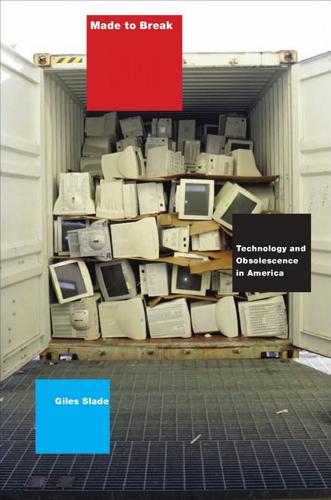
Made to Break: Technology and Obsolescence in America
by
Giles Slade
Published 14 Apr 2006
They kept the same name, but (to the dismay of some traditionalists) they lost their pretty ribbons. DISPOSABLE PRODUCTS FOR WOMEN In the early decades of the twentieth century, manufacturers who had embraced disposability as a viable way to achieve repetitive consumption realized that in catering mainly to men, they severely limited their potential market. Urbanization and industrialization had changed American gender roles, and single women were entering the workforce in greater numbers. Brochures published by the Women’s Educational and Industrial Union of Boston record the variety of employment opportunities available to women. Many of the suggested positions were previously restricted to men.
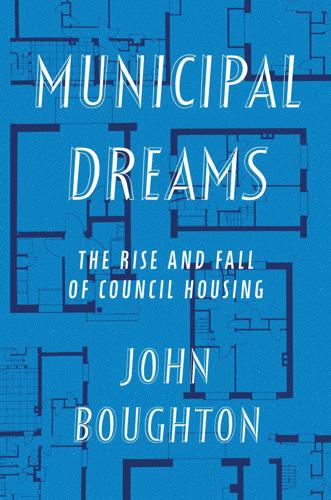
Municipal Dreams: The Rise and Fall of Council Housing
by
John Boughton
Published 14 May 2018
Smith, Low Hill: Study of a Wolverhampton Housing Estate (Wolverhampton Young Volunteers, 1971). 32Sheffield City Council, Wybourn, Arbourthorne, Manor Park Master Plan (2005). 33Phil Griffin, ‘On the Terraces’, Building Design Magazine Supplement, no. 8, special issue, bdonline.co.uk, 15 June 2007. 34Philip Leather and Brendan Nevin, ‘The Housing Market Renewal Programme: Origins, Outcomes and the Effectiveness of Public Policy Interventions in a Volatile Market’, Urban Studies, vol. 50, no. 5, 871. 35Hatherley, A Guide to the New Ruins of Great Britain, xvii. 36Stuart Hodkinson, ‘The Private Finance Initiative in English Council Housing Regeneration: A Privatisation too Far?’ Housing Studies, vol. 26, no. 6, 2011, 914. 37Salford City Partnership Creating a New Pendleton: Benefits Realisation Plan (July 2009), 7, partnersinsalford.org, accessed 31 March 2017. 38Pendleton Together, An Ideal for Living (ND), pendletonway.co.uk, accessed 31 March 2017. 39Luke Cross, ‘Together Closes Salford PFI with £82.6m Two-Tranche Bond’, Social Housing, 4 October 2013, socialhousing.co.uk, accessed 31 March 2017. 40Stuart Hodkinson, Council Housing Regeneration and the Private Finance Initiative: An Overview (ND), defendcouncilhousing.org.uk, accessed 31 March 2017. 41National Audit Office, PFI in Housing, June 2010, 5–9, nao.org.uk, accessed 31 March 2017. 42Cathy Davis, Finance for Housing: An Introduction (Policy Press, 2013), 14. 43National Audit Office, The Decent Homes Programme, January 2010, 12, nao.org.uk, accessed 3 April 2017. 44National Audit Office, The Decent Homes Programme, 6 and 19. 45Koos Couvée, ‘Woodberry Down in Hackney: How “Regeneration” is Tearing Up Another East London Community’, The Multicultural Politic (28 June 2012), tmponline.org. 46Rachael Clegg, ‘Welcome to the Modern Manor, Sheffield’, The Star, 31 July 2012, thestar.co.uk, accessed 3 April 2017. 47The Riverside Group, Carlisle Housing Association, Carlisle City Council, Lovell, Ainsley Gommon Architecture and Urban Design, Raffles Vision: Draft Final Report (ND).
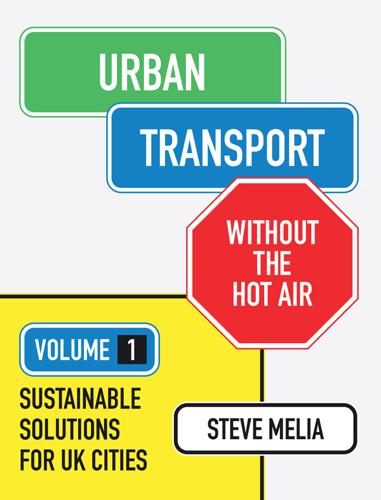
Urban Transport Without the Hot Air, Volume 1
by
Steve Melia
Figure 9.4 Percentage of trips in distance bands walked or cycled: Bristol suburbs surveyed for SOLUTIONS225 Findings like this have strengthened the case that planners can and should be able to influence how people travel, providing governments allow them to make decisions, instead of leaving everything to the market. Urban intensification, reducing walking distances and increasing catchment populations, can help to reduce car use and increase walking, cycling and public transport use. But like many policies implemented for good reasons it may also cause unintended consequences. Figure 9.5 shows a similar relationship to Figure 9.1, although the units of measurement are different.
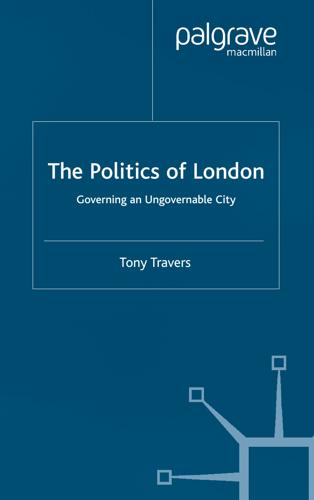
The politics of London: governing an ungovernable city
by
Tony Travers
Published 15 Dec 2004
While cities – in Britain and elsewhere – had been in decline for much of the 1950s, 1960s and 1970s, an urban revival began in the 1980s; this started with the smaller and medium-sized cities, but in the 1990s spread to the major capitals and centres of finance and business. By the 1990s, cities were clearly back on the political agenda. National governments saw them as key assets; major European and North American cities engaged in a frantic and ceaseless round of city marketing, urban boosterism and ruthless competition for inward investment, attracting skilled workers and prestige arts, cultural and sporting events. At the same time, there was increasing concern about rising inequalities in cities such as London and New York (Fainstein et al., 1992; London Research Centre, 1996).
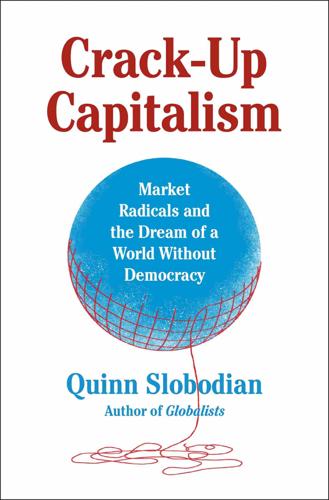
Crack-Up Capitalism: Market Radicals and the Dream of a World Without Democracy
by
Quinn Slobodian
Published 4 Apr 2023
Recovering from a stumble after the Black Monday stock market crash of 1987, by the mid-1990s Canary Wharf stood as the City’s double, a glistening monument to the new metropole. Estimates suggested the developer had used the enterprise zone status to secure £1.3 billion in tax breaks and infrastructure for a supposed “paragon of free-market urban revitalization.”64 Its central structure was One Canada Square, a fifty-story skyscraper capped with a pyramid designed by another of the era’s star architects, César Pelli. When Prime Minister Tony Blair hosted French president Jacques Chirac on the thirty-eighth floor of the building, they looked down on streets named after famous settlers of the Americas—Columbus Courtyard, Cabot Square—as well as on the site where Blair, like Shand, planned for the Olympic Games.65 If London had gone from trading things to trading money, now it started trading space, as real estate—and housing in particular—became a new global asset.66 Homeownership became depersonalized and tradable, set adrift on waves of global supply, demand, and speculation.
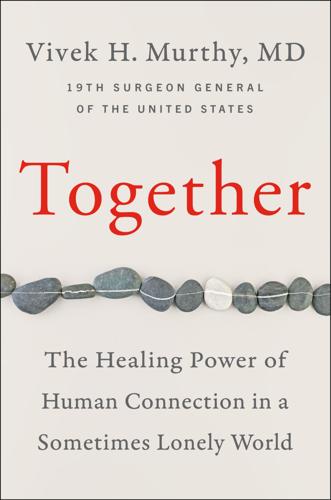
Together
by
Vivek H. Murthy, M.D.
Published 5 Mar 2020
Curtin, and Margaret Warner, Suicide Mortality in the United States, 1999–2017, National Center for Health Statistics, https://www.cdc.gov/nchs/products/databriefs/db330.htm. 27Erika Beras, “Bhutanese Refugees Face a High Suicide Rate,” Center for Health Journalism, January 29, 2014, accessed September 6, 2019, https://www.centerforhealthjournalism.org/bhutanese-refugees-face-high-suicide-rate. 28Panos Christodoulou, “This is how it feels to be lonely,” The Forum, March 11, 2015, http://migrantsorganise.org/wp-content/uploads/2014/09/Loneliness-report_The-Forum_UPDATED.pdf. 29Ibid. 30Population Division of the UN Department of Economic and Social Affairs (DESA), “International Migrant Stock 2019,” UN, accessed September 25, 2019, https://www.un.org/development/desa/en/news/population/international-migrant-stock-2019.html. 31“Global Migration Indicators 2018,” Global Migration Data Analysis Centre (GMDAC) International Organization for Migration, accessed September 25, 2019, https://publications.iom.int/system/files/pdf/global_migration_indicators_2018.pdf. 32“Statistical Communiqué of the People’s Republic of China on the 2018 National Economic and Social Development,” National Bureau of Statistics of China, February 28, 2019, http://www.stats.gov.cn/english/PressRelease/201902/t20190228_1651335.html. 33Haining Wang, Fei Guo, and Zhiming Cheng, “A distributional analysis of wage discrimination against migrant workers in China’s urban labour market,” Urban Studies 52, no. 13 (October 2015): 2383–2403, https://www.jstor.org/stable/26146146. 34“Brakes on China’s floating population,” South China Morning Post, September 19, 2019, https://www.scmp.com/article/980385/brakes-chinas-floating-population. 35Hisao Endo, “National Institute of Population and Social Security Research,” National Institute of Population and Social Security Research, 2017, http://www.ipss.go.jp/pr-ad/e/ipss_english2017.pdf. 36Yahoo!
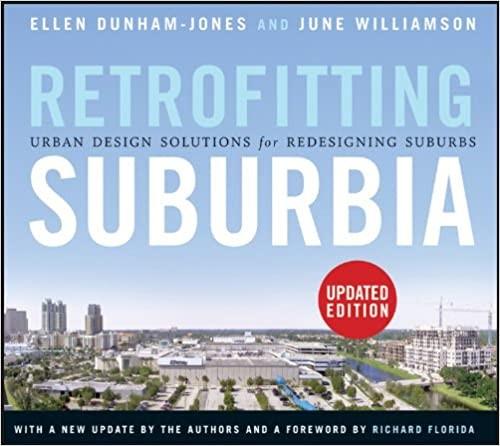
Retrofitting Suburbia, Updated Edition: Urban Design Solutions for Redesigning Suburbs
by
Ellen Dunham-Jones
and
June Williamson
Published 23 Mar 2011
Although it has become standard practice to describe their popularity in terms of providing workspace that was newer, less expensive, safer, closer to executive housing, and closer to many workers’ homes than that located in traditional downtowns, examination of their history suggests there was nothing inevitable about the form of the edge cities that the market delivered.30 Edgeless Cities In fact, there are new studies refuting the dominance of edge cities in suburban office markets. Urban researchers Robert E. Lang and Jennifer LeFurgy argue that edge cities have been leapfrogged by even less compact office complexes that they have dubbed “edgeless cities.” Because office spaces do not require specialized infrastructure and many see little benefit from an upscale, higher-cost, edge-city location, large numbers of suburban office buildings have been built in low-density strips of commercially zoned property along highways or in other highly dispersed locations.

Scale: The Universal Laws of Growth, Innovation, Sustainability, and the Pace of Life in Organisms, Cities, Economies, and Companies
by
Geoffrey West
Published 15 May 2017
This collective outcome, in which a system manifests significantly different characteristics from those resulting from simply adding up all of the contributions of its individual constituent parts, is called an emergent behavior. It is a readily recognizable characteristic of economies, financial markets, urban communities, companies, and organisms. The important lesson that we learn from these investigations is that in many such systems there is no central control. So, for example, in building an ant colony, no individual ant has any sense of the grand enterprise to which he is contributing. Some ant species even go so far as to use their own bodies as building blocks to construct sophisticated structures: army ants and fire ants assemble themselves into bridges and rafts for use in crossing waterways and overcoming impediments during foraging expeditions.

The Survival of the City: Human Flourishing in an Age of Isolation
by
Edward Glaeser
and
David Cutler
Published 14 Sep 2021
Chapter 3 described how urban crowding enables disease to spread more readily, especially among the urban poor who live in the slums of low-income megacities or people anywhere who can’t afford to shelter in place. In this chapter, we focus on how urban abundance and inequality can enable lifestyles that make our bodies more vulnerable, both to contagious disease and to death more generally. Urban innovations include not only art and philosophy but also the Oreo cookie and the open-air drug market. Urban abundance plays out differently on Park Avenue, where portions are small and exercise is frequent, than in poor neighborhoods where fried food provides an affordable—if unhealthy—escape into pleasure. Like all else in health, obesity, opioid abuse, and cigarette smoking follow education and income.

Aerotropolis
by
John D. Kasarda
and
Greg Lindsay
Published 2 Jan 2009
Baltimore: Johns Hopkins Press, 1965. Toffler, Alvin. Future Shock. New York: Random House, 1970. ———. PowerShift: Knowledge, Wealth, and Violence at the Edge of the 21st Century. New York: Bantam Books, 1990. Tomkins, J., N. Topham, J. Twomey, and R. Ward. “Noise versus Access: The Impact of an Airport in an Urban Property Market.” Urban Studies 35, no. 2 (1998): 243–56. Turner, Chris. The Geography of Hope: A Tour of the World We Need. Toronto: Random House Canada, 2007. Ullman, Edward. “A Theory of Location for Cities.” American Journal of Sociology 46, no. 6 (May 1941): 853–64. United Nations Human Settlements Programme.
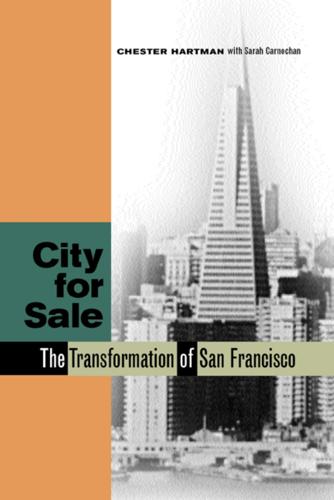
City for Sale: The Transformation of San Francisco
by
Chester W. Hartman
and
Sarah Carnochan
Published 15 Feb 2002
Throughout 1960, SPUR worked closely with the San Francisco Redevelopment Agency (SFRA), holding meetings with businessmen and influential citizens who favored downtown commercial redevelopment. In December 1960, Mayor George Christopher designated SPUR the City’s official Citizens’ Advisory Committee, a body required under federal urban renewal law. Shortly thereafter, this “citizens’ group” gave its required approval, and the mayor formally requested SFRA to undertake South of Market urban renewal. 12 / Chapter 1 Ben Swig’s Dream SPUR’s entry into planning for South of Market redevelopment in reality took the form of reviving a proposal put forward six years earlier by one of the city’s more fabulous proposers and disposers, Ben Swig. Benjamin Harrison Swig was a Bostonian who, already wealthy from dealings in hotels and real estate, moved to San Francisco in the 1940s.39 A model of the self-made man, he had amassed a fortune through real estate and land speculation in the 1920s and 1930s.
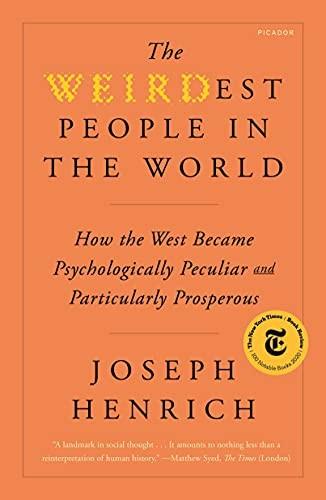
The WEIRDest People in the World: How the West Became Psychologically Peculiar and Particularly Prosperous
by
Joseph Henrich
Published 7 Sep 2020
Instead, they probably would have bet on China or the Islamic world.1 What these aliens would have missed from their orbital perch was the quiet fermentation of a new psychology during the Middle Ages in some European communities. This evolving proto-WEIRD psychology gradually laid the groundwork for the rise of impersonal markets, urbanization, constitutional governments, democratic politics, individualistic religions, scientific societies, and relentless innovation. In short, these psychological shifts fertilized the soil for the seeds of the modern world. Thus, to understand the roots of contemporary societies we need to explore how our psychology culturally adapts and coevolves with our most basic social institution—the family.

The Friendly Orange Glow: The Untold Story of the PLATO System and the Dawn of Cyberculture
by
Brian Dear
Published 14 Jun 2017
Initially, his notes were GUIDO related, but were not quite what the music faculty and staff had in mind. Fortunately, Bill Lynch, GUIDO’s programmer and director of the notesfile, found Graper’s stories amusing. They met and became friends. Graper’s stories gave him an outlet for his frustrations at what he viewed as the absurdity of university life, consumer life, television, marketing, urban congestion, dumb people, and a long litany of other complaints. What he had not expected was the reaction to his stories, the following of fans that grew, and the demand, unceasing, incessant, for more. In time, Graper was becoming such a weight on the otherwise quaint little =guidonotes= notesfile that Lynch decided to create a notesfile just for Graper.
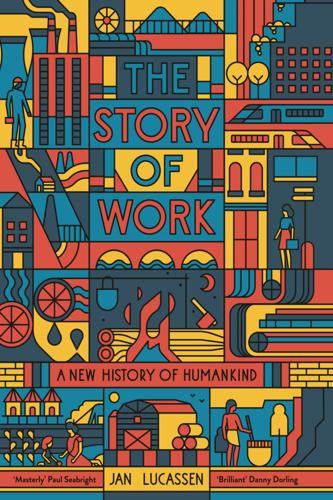
The Story of Work: A New History of Humankind
by
Jan Lucassen
Published 26 Jul 2021
By far the most important industry in the cities was textile processing, and, in Western Europe in particular, the wool industry, such as that in the Italian and Flemish cities, but also in England, France and Spain.224 In the thirteenth century, this was concentrated in small workshops of craftsmen practising their vocation, and a few journeymen and apprentices. They worked in a ‘putting-out system’, which meant that the looms were theirs but that they received the raw materials from an entrepreneur and processed them for a piece wage. It was also the entrepreneur who sold the ready products in the market. Urban industry was generally dominated by the textile industry elsewhere at this time, albeit for the manufacture of cotton and silk rather than wool. Following the Black Death in Europe in the mid-fourteenth century, urban artisans focused more on luxury production, while the mass production of textiles shifted to the countryside.

The Stack: On Software and Sovereignty
by
Benjamin H. Bratton
Published 19 Feb 2016
It may be a matter of debate whether for parametricism that a shift away from representation is at work, or whether the style has introduced a formal vocabulary for the indexical expression of fast finance in building form. Schumacher, however, may not find this such a problem. See “I Am Trying to Imagine a Radical Free Market Urbanism: Conversation between Peter Eisenman and Patrik Schumacher,” Log 28 (Summer 2013). However, this is not the only perspective available. Luciana Parisi has outlined a more promising alternative grammar of algorithmic thought and practice in contrast to deterministic homeostasis and formal closure in her Contagious Architecture: Computation, Aesthetics, and Space (Cambridge, MA: MIT Press, 2013).